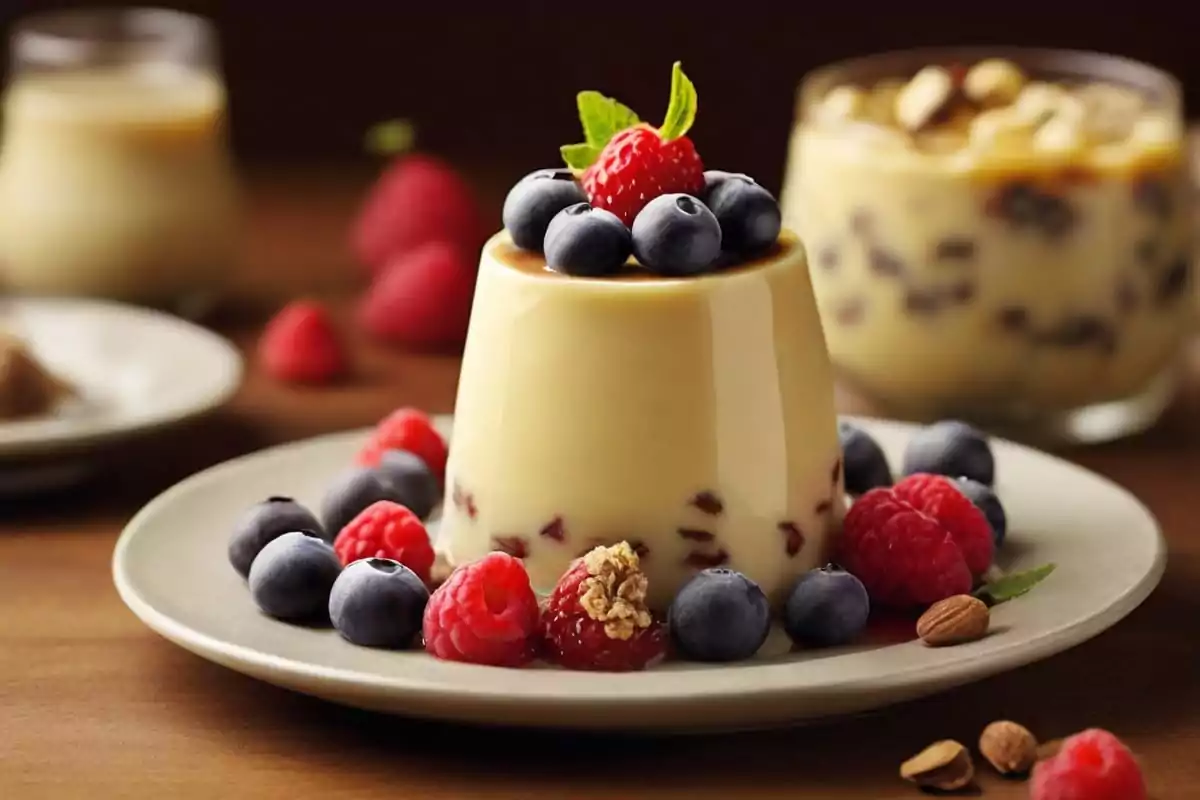Introduction to Pudding
Understanding the Types of Pudding
Pudding, in its myriad forms, offers a canvas for culinary artistry, a medium through which flavors and textures dance in harmony. As we delve into the three main types of pudding, we uncover the essence of this beloved dessert, each type a distinct character in the grand narrative of gastronomy.
Custard-Based Puddings
In the realm of desserts, custard-based puddings stand out for their luxurious texture and versatility. The alchemy of eggs, milk, and heat, often with a whisper of vanilla, creates a concoction that’s both simple and sublime. This type of pudding is a testament to the magic that can happen with just a few ingredients, a gentle heat, and a bit of patience.
Custard-based puddings are a celebration of smoothness, where the richness of the egg yolks meets the creamy consistency of milk, thickened to perfection. The beauty of these puddings lies in their simplicity and the endless possibilities for flavoring. From the classic vanilla bean, with its delicate floral notes, to the boldness of chocolate or the tartness of lemon, custard-based puddings can be tailored to suit any taste.
The key to mastering custard-based puddings lies in the technique. A slow, gentle heat and constant stirring are crucial to prevent the eggs from scrambling, ensuring the pudding remains smooth and silky. This type of pudding not only stands alone as a delightful dessert but also serves as a base for other desserts, such as trifle or banana cream pie, showcasing its versatility.
Bread and Rice Puddings
Bread and rice puddings are the epitome of comfort food, transforming simple, often leftover, ingredients into a dish that’s both satisfying and indulgent. These puddings embody the spirit of resourcefulness, a sweet reminder of the times when nothing was to waste.
Bread pudding, with its humble beginnings, uses stale bread as its foundation, soaked in a mixture of milk, eggs, and sugar, then baked until golden and custardy inside. The addition of raisins, nuts, or chocolate chips adds texture and flavor, making each bite a delightful surprise. Similarly, rice pudding takes leftover rice to new heights, with the grains becoming tender and creamy as they simmer in milk, sweetened with sugar and spiced with cinnamon or cardamom.
These types of puddings are not just about taste; they’re about memories and comfort, evoking a sense of nostalgia and warmth. They remind us of the power of simple ingredients to create something truly special, a dish that’s both hearty and sweet, perfect for any occasion.
Steamed Puddings
Steamed puddings, a treasure of traditional British cuisine, are a testament to the art of patience and the joy of anticipation. Made with a batter or dough that includes flour, fat, eggs, and sugar, these puddings are cooked slowly over steam, resulting in a moist, dense texture that’s utterly comforting.
The beauty of steamed puddings lies in their versatility. Sweet versions might include dried fruits, spices, and treacle, offering a rich, deep flavor that’s perfect for cold evenings. Savory variations, though less common, are equally delightful, incorporating meats or vegetables for a hearty meal.
Steamed puddings, with their long cooking times, invite us to slow down and savor the process, a reminder of the days when meals were a labor of love. The anticipation builds as the pudding steams, filling the kitchen with mouthwatering aromas, leading to that moment of satisfaction when it’s finally unveiled, ready to be enjoyed.
As we explore these three main types of pudding, we’re reminded of the diversity and richness of this classic dessert. From the silky elegance of custard-based puddings to the comforting simplicity of bread and rice puddings, and the hearty tradition of steamed puddings, there’s a world of flavors and textures to explore. Each type of pudding offers a unique taste experience, rooted in tradition yet adaptable to modern palates, inviting us to discover the joys of pudding in all its forms.

Pudding Around the World
Pudding, a versatile and beloved dessert, transcends borders, adapting to the tastes and traditions of cultures worldwide. As we journey through the global landscape of pudding, we discover not only the diversity of ingredients and techniques but also the shared love for this comforting dish.
DIY Pudding Recipes
Embarking on a DIY pudding adventure is not just about recreating classic recipes; it’s about infusing your personal touch, experimenting with flavors, and perhaps, starting new traditions. Whether you’re a novice in the kitchen or a seasoned chef, making pudding from scratch is a rewarding endeavor that brings the essence of comfort food right into your home.
Basic Techniques for Beginners
For those dipping their spoons into the pudding-making process for the first time, starting with the basics is key. A simple Vanilla Custard Pudding serves as the perfect foundation. You’ll need milk, sugar, cornstarch (as a thickener), and vanilla extract. The secret to a smooth custard lies in the gentle heating and constant stirring, ensuring the mixture thickens without curdling. This basic recipe opens the door to countless variations—add chocolate, fruit purees, or spices to tailor it to your taste.

Advanced Tips for Perfect Pudding
Once you’ve mastered the basics, it’s time to elevate your pudding game. Experimenting with ingredients like egg yolks can enrich the texture and flavor of your pudding, offering a more decadent experience. Incorporating techniques such as tempering eggs will ensure your custard is silky and lump-free. For those seeking a challenge, a Chocolate Soufflé Pudding combines the richness of pudding with the airy texture of a soufflé, a delightful twist on traditional recipes.
